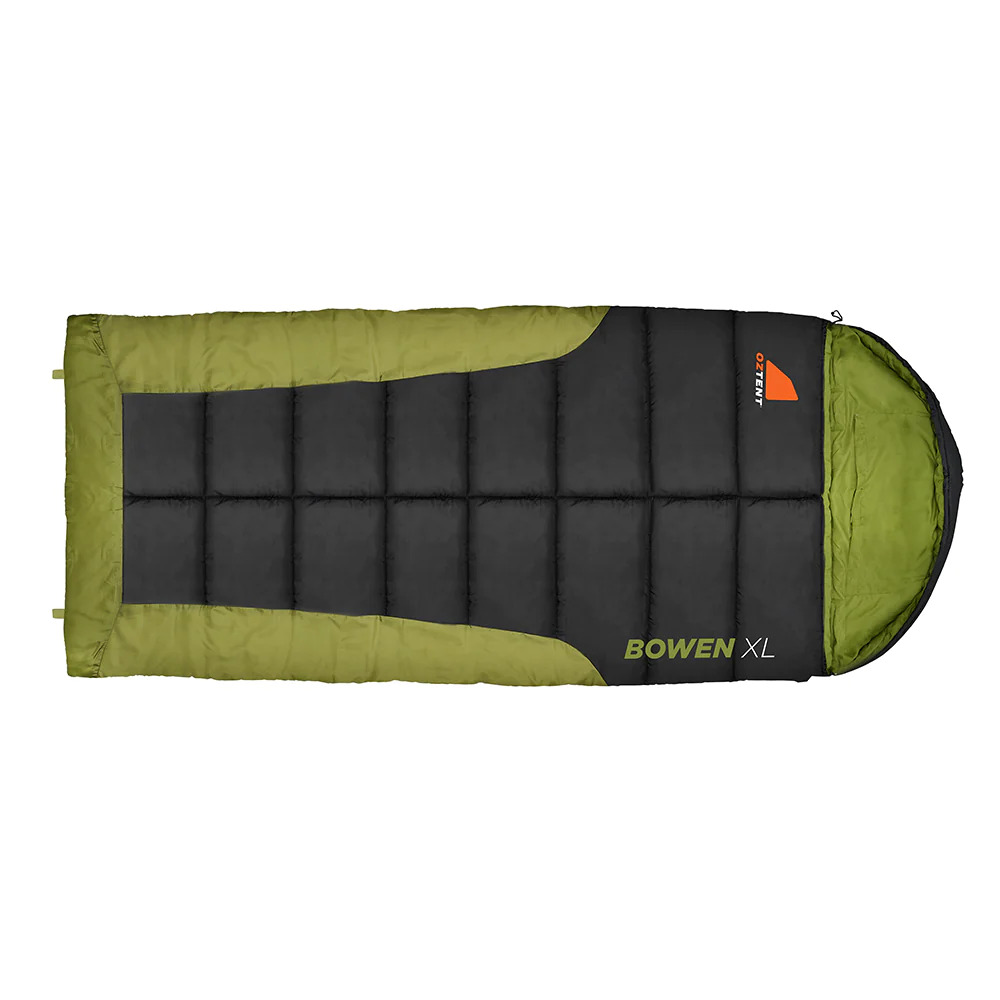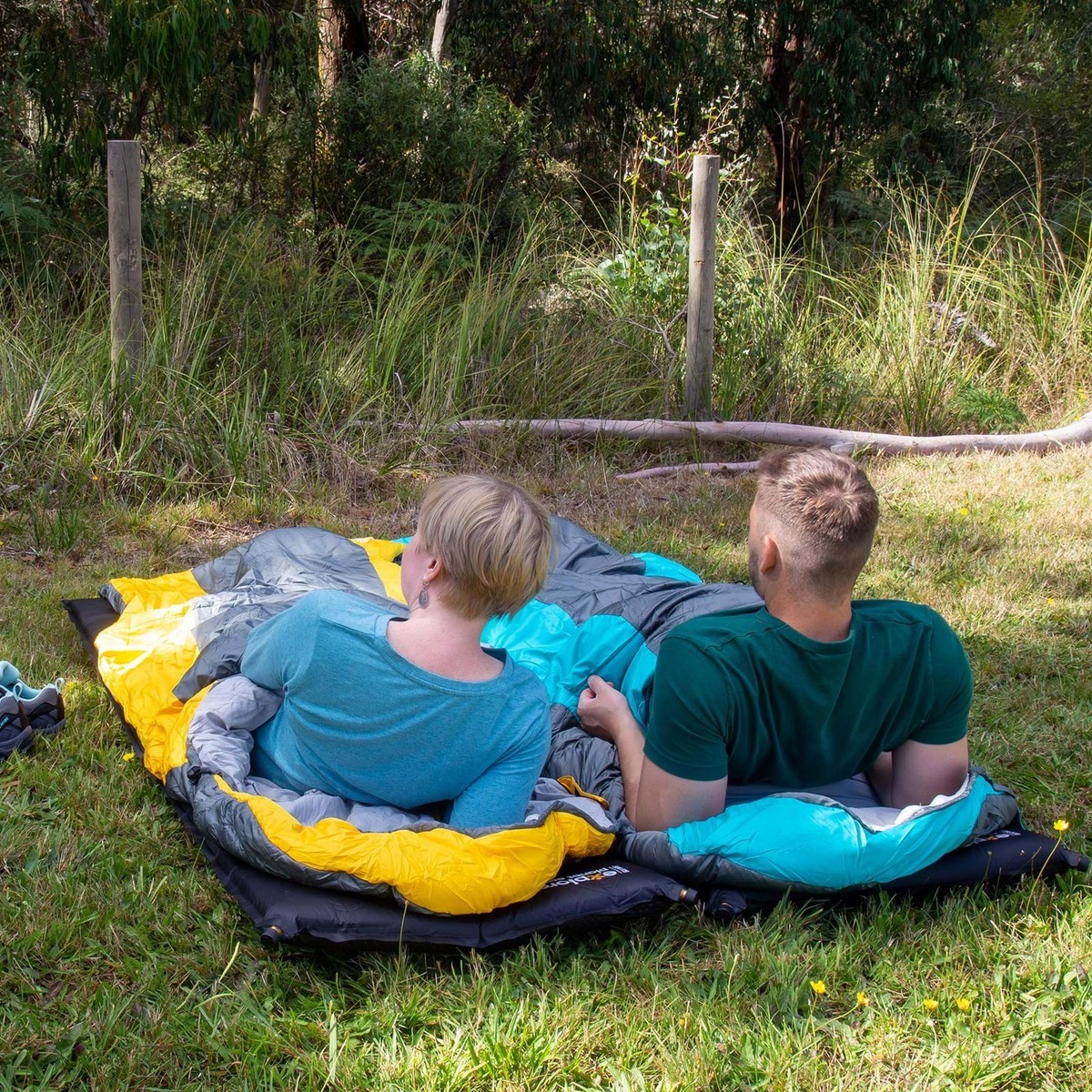Choosing the Best Sleeping Bag for Your Camping Adventures

Ultimate Guide to Choosing the Best Sleeping Bag for Your Adventures
When you're out in the wild, a good night's sleep is crucial. It keeps you energized and ready for the next day's adventures. The right sleeping bag can make all the difference. It ensures you stay warm and comfortable, no matter the weather.
In this guide, we'll help you choose the best sleeping bag for your needs. We'll cover key topics like temperature ratings, bag shapes, and fill materials. You'll learn how to select a bag that matches your camping style and environment. Whether you're a backpacker or a car camper, this guide has you covered.
Get ready to find your perfect sleeping bag and enjoy restful nights under the stars.
How to Choose the Best Sleeping Bag for Camping
When choosing a sleeping bag, consider your camping environment. Will you camp in warm, mild, or cold weather? Are you expecting rain, snow, or dry conditions? These factors affect your sleeping bag choice, as well as whether you'll be using a tent or a swag.
Tip: Also read our Swag vs Tent guide
In warmer climates, a lightweight sleeping bag with good ventilation is ideal, especially when paired with a breathable tent. For cold weather, opt for a bag with excellent insulation to stay warm in your tent or swag.
For dry, cold climates, down fill provides superior warmth, whether you're sleeping in a tent or a swag under the stars.
What Type of Sleeping Bag is Right for Me?

Temperature ratings are crucial for comfort during your outdoor adventures. They show the range of temperatures in which a sleeping bag will keep you warm. Understanding these ratings helps you choose a bag that matches your trip's conditions.
What is a Sleeping Bag Temperature Rating and Why is it Important?
Temperature ratings indicate how warm a sleeping bag will keep you. The most important rating is the comfort rating, which shows the lowest temperature at which an average person can sleep comfortably. Understanding these ratings helps you choose a bag that matches the conditions of your trip.
How to Choose Sleeping Bags Based on Temperature Rating
Consider your personal cold tolerance and the expected temperatures of your trip. Always choose a bag with a comfort rating lower than the coldest temperature you expect. It's easier to cool down by unzipping the bag than to warm up if it's not warm enough.
Which Sleeping Bag Shape is Best?

Sleeping bags come in various shapes, each with unique benefits. Rectangular bags offer ample space, making them comfortable for those who move a lot in their sleep. Mummy bags are snug and tapered, providing maximum insulation and warmth, which is ideal for cold conditions. Semi-rectangular bags strike a balance between space and warmth, making them a versatile option.
Advantages of Mummy Bags: Mummy bags fit closely to your body, reducing air space and keeping you warmer. They often have hoods to retain heat around your head, enhancing their insulating properties.
Rectangular Bags vs. Mummy Bags
When comparing rectangular and mummy bags, warmth is a key factor. Mummy bags are warmer due to their snug fit, while rectangular bags are less warm but offer more comfort for those who move during sleep. In terms of packability, mummy bags are more compact and lighter, making them better for backpacking. Rectangular bags, being bulkier and heavier, are more suitable for car camping.
Choosing a Sleeping Bag Shape for Comfort
Your sleeping position and personal preferences play a significant role in choosing the right shape. Side sleepers or those who move a lot might prefer a rectangular or semi-rectangular bag for more room. If you prioritize warmth and can sleep comfortably in a more confined space, a mummy bag is the ideal choice.
Why Sleeping Bag Fill Matters
The fill material in a sleeping bag impacts its warmth, weight, and performance in various conditions. Synthetic fills, made from man-made fibers, are durable and maintain insulation even when wet. Down fills, sourced from duck or goose feathers, are lightweight and offer excellent warmth-to-weight ratios but lose insulation when wet and require more care.
Synthetic vs. Down Sleeping Bags
Synthetic sleeping bags are advantageous in wet conditions as they retain warmth when damp and are generally more affordable. However, they tend to be heavier and bulkier than down bags. Down sleeping bags are preferred for their lightweight and compressible nature, providing superior warmth, but they are more expensive and less effective in wet conditions.
The best fill material depends on the conditions you'll face. Synthetic fill is better for wet environments, while down fill excels in dry, cold conditions due to its superior warmth and compressibility.
Choosing a Sleeping Bag for Backpacking vs. Car Camping

Choosing the right sleeping bag depends on whether you're backpacking or car camping. Each activity has different needs for weight, packability, and features.
Backpacking requires a lightweight sleeping bag. You need to carry it over long distances, so every gram counts. Down sleeping bags are often preferred because they offer great warmth-to-weight ratios. Camping allows for heavier bags that provide more comfort and insulation since weight isn't a concern.
A sleeping bag for backpacking must pack down small. This saves valuable space in your backpack. Down bags excel in compression, making them ideal for backpackers. Car campers can choose bulkier bags because space is not restricted.
Backpacking sleeping bags typically have minimalist designs. This keeps the weight down. Essential features include a good hood, draft collar, and high-quality zippers. camping bags can offer more spacious designs and extra features. Double zippers for ventilation and integrated pillows add comfort and convenience.
- Backpacking: Choose a lightweight, compact sleeping bag. Down fill is often preferred for its light weight and packability.
- Camping: Weight and size are less of a concern. Opt for a more comfortable and spacious bag, like a rectangular or semi-rectangular shape. Synthetic fill can be a good choice for its durability and ease of care.
Additional Sleeping Bag Accessories You Should Consider
Enhancing your sleeping bag setup with the right accessories can significantly improve comfort and functionality.
Benefits of Sleeping Bag Liners:
Sleeping bag liners offer added warmth and hygiene. They can increase the temperature rating of your sleeping bag by a few degrees, providing extra insulation on cold nights. Liners are also easy to wash, keeping your sleeping bag cleaner for longer.
Using a Sleeping Pad for Extra Comfort:
Sleeping pads are essential for a good night's sleep outdoors. They provide insulation from the cold ground and add a layer of cushioning. Different types of sleeping pads include foam pads, self-inflating pads, and air pads. Foam pads are durable and affordable, self-inflating pads offer a balance of comfort and convenience, and air pads are lightweight and compact, ideal for backpacking.
Why a Sleeping Bag Hood is Important:
A sleeping bag hood helps retain heat in colder conditions. Your head is a major point of heat loss, so a snug hood can make a big difference in keeping you warm. It traps heat around your head and neck, enhancing overall warmth and comfort.
Recommendations Based on Conditions
| Condition | Recommended Sleeping Bag Type | Notes |
| Warm Climates | Lightweight sleeping bag with good ventilation | Look for breathable materials |
| Cold Climates | Sleeping bag with excellent insulation | Down fill for dry, cold; synthetic fill for wet conditions |
| Wet Conditions | Synthetic fill sleeping bag | Retains warmth even when damp |
| Dry, Cold Conditions | Down fill sleeping bag | Provides superior warmth-to-weight ratio |
| Backpacking | Lightweight, compact sleeping bag | Mummy or semi-rectangular shape for better packability |
| Camping | Spacious, comfortable sleeping bag | Rectangular or semi-rectangular shape for more room |
| High Movement Sleepers | Rectangular or semi-rectangular sleeping bag | More room to move during sleep |
| Minimalist Design Preference | Mummy sleeping bag | Focus on essential features and warmth |
| Additional Comfort Required | Sleeping bag with extra features (e.g., integrated pillow) | Double zippers for ventilation, draft collars, hoods |
Final Thoughts
Choosing the right sleeping bag can make or break your outdoor adventure. Focus on the camping conditions you'll face, the bag's temperature rating, and its shape to ensure you stay warm and comfortable. Opt for synthetic fills in damp environments and down fills for dry, cold conditions. Remember, backpackers need lightweight and packable options, while car campers can enjoy roomier, more feature-rich bags. Don't forget accessories like sleeping pads, liners, and choosing the right tent for added comfort. With these considerations in mind, you're ready to find the perfect sleeping bag for your next adventure. Happy camping!

